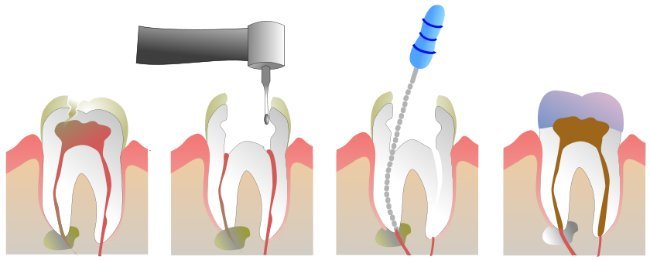Root canals are often one of the best treatments to help salvage teeth, offering a very high success rate and benefits that can last a lifetime. Root canals are also one of the most misunderstood standard dental procedures.
The first aspect of understanding why a root canal is essential is to understand the role it plays for your overall oral health. A root canal therapy or endodontic treatment is performed when the dental pulp is affected due to decay, inflammation, trauma, or any other reason. A root canal removes the nerve and pulp of a tooth while cleaning and sealing the tooth. If left untreated, there is a significant risk of having an infection.
Root Canals Are Used by Dentists in Edmonton to Solve a Series of Issues, Which Include:
- An abscess on the gums.
- Severe sensitivity to both hot and cold temperature.
- A chipped or fractured tooth.
- Severe throbbing toothache.
- Swelling and/or tenderness.
- Decay has reached the tooth pulp (the living tissue inside the tooth).
- Infection or abscess developed inside the tooth or at the root tip.
- An injury or trauma to the tooth.
- Foul taste around a tooth.
It is important to note that there should be a sense of urgency to complete your root canal if you need one. Delaying the process can dramatically increase the risk of your losing your tooth for good. Trying to replace a lost tooth with implants can be much more expensive. Regular cleaning and check-ups help spot any potential problems early on and can also help prevent root canals, to begin with.
If You Are Due for a Root Canal, Here’s What You Can Expect from the Process:
- First, local anesthesia is injected to the tooth.
- Once the tooth and the surrounding area becomes numb, the dentist drills an opening through the crown or the biting surface of the tooth to access the pulp chamber.
- Using particular files, the dentist cleans out the infected dead pulp from the canals, and any dead tissues are removed.
- Once all the infected and dead tissues are removed, the canals are disinfected and cleaned.
- The canals are then shaped with fine instruments so that they can be filled with the root canal fillings known as gutta-percha and sealed. During the process of shaping, the irrigation method is used to wash and clean the canals and remove the debris before inserting the filling and sealing the tooth.
- In most cases a crown is recommended after root canal therapy.


The best way to learn if a root canal is the right treatment plan for you is by visiting your local dentist. North Edge dental is open later during the week and on the weekends, making it easier to schedule your appointment without interrupting your work and family schedule.



